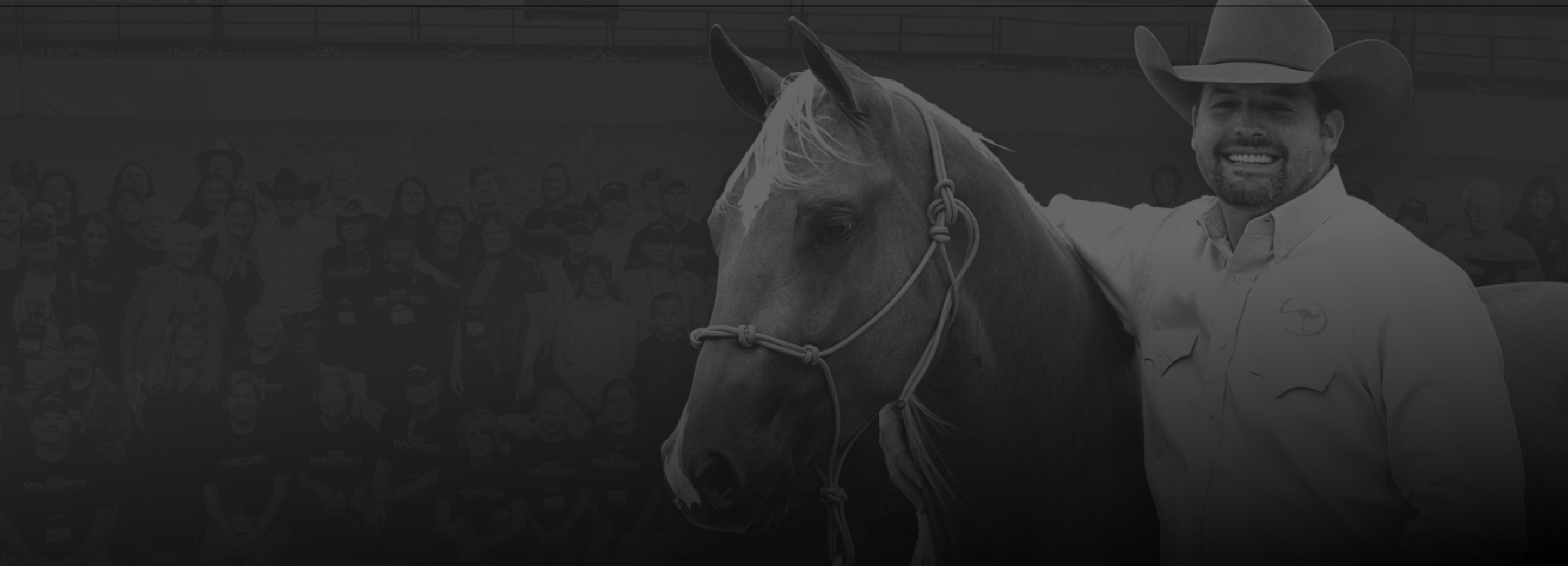Techniques to Stop a Horse from Bucking
Clinton Anderson from Downunder Horsemanship has a unique way of training horses … and it actually works. His success comes from training not only the horses, but the owners too. Clinton knows that horses are beautiful creatures with a strength that can be dangerous, which is why having your horse’s respect is so important. Join us weekly as Clinton tackles some of the most challenging situations with problem horses and problem owners. In this week’s episode, Clinton works with Nikki to finally put an end to her horse’s bucking problem.

Bucking problems are dangerous. They lead to broken necks, broken backs, broken pelvises and sometimes, people can never ride again. More often than not, when a horse bucks their rider off, confidence is lost and owners give up. Nikki didn’t want to give up on her horse George, so she sought out Clinton’s help.
When Nikki and George arrive at the Downunder Horsemanship Ranch, Shana Terry, one of Clinton’s professional clinicians, was there to greet them. Clinton reminds us that a horse bucking is really just a symptom of a cause—fix the cause, and the problem disappears. To see exactly where George is at with his bucking problem, Clinton brings in a professional cowboy to get in the saddle and see what George does. George acts completely out of control. When a professional cowboy says your horse has a problem, you know it’s serious.
Luckily, Clinton has a tried-and-true method for training horses like George. Since the gelding is using the reactive side of his brain, the training will focus on getting him to use the thinking side of his brain and to relax. In these circumstances, starting with the basics is absolutely essential. While Shana works with George, Clinton explains the training process to help Nikki understand each step of George’s training.
Shana starts by getting George to move his feet, which helps build respect. This is done through Yielding the Hindquarters Stage One. Once the gelding responds to Shana, she moves on to Lunging for Respect Stage One. These exercises help owners gain control of their horses’ feet, an essential aspect of a safe relationship.
After working through the basics, it’s time to start eliminating any fear that George has. Shana does this by performing a few desensitizing exercises that are aimed at showing George that her tools are not out to get him. This means putting the saddle on and taking it off a few times, throwing the lead rope at him, and slapping the ground around him with the stick.
Clinton has Shana double-check that there are no more signs of bucking when George is approached with the saddle. When his desire to buck seems to have disappeared, it’s time for Nikki to get on George and try to ride him again. While she is a bit nervous at first, George remains calm. Preparation is the key to success. The groundwork is essential in tackling these types of problems, so never try to skip any steps during training.
Slowly but surely, we see Nikki grow more comfortable as she reunites with her horse. Clinton gives Nikki back her control and confidence in her horse, George. With the Clinton Anderson Method, she can continue training him at home and make sure he never bucks again.
At the end of the day, any problem you have with your horse will disappear once you gain their respect, get the fear out of them, and get them to start using the thinking side of their brain. If you’re interested in learning more about the Clinton Anderson training method, or any of the products featured on today’s show, check out our website and browse the ultimate collection of kits.




